Ardabil Grand Bazaar
One of Ardabil's most remarkable landmarks is its grand bazaar, a vibrant and lively market dating back to the 7th and 8th centuries AH. This ancient bazaar showcases Iran's history from the distant past to the present day.
With its intricate network of corridors, shops, and caravansaries, entering the bazaar feels like stepping back in time. The bazaar of Ardabil, with its traditional design, remains a bustling center of commerce and a living narrative of Ardabil's ancient history.
It’s famous for its vibrant atmosphere, diverse range of goods, including traditional Iranian crafts, spices, and textiles, and the warm hospitality of its vendors. Notable sections include the Serais and Timchehs, with the prominent Qeysariyeh Bazaar standing out.
As one of Ardabil's key attractions, the bazaar is a must-visit for anyone interested in experiencing the city's rich cultural and historical tapestry. Stay with us to learn everything you need to know about the Ardabil Grand Bazaar.
About the Grand Bazaar of Ardabil
The Bazaar of Ardabil, originally constructed during the Seljuk period, reached its peak during the Safavid era. Located on Imam Khomeini Street in Ardabil, the bazaar is uniquely divided by the street running through its center. This traditional market has been fragmented by modern urban planning, with new commercial fronts extending along the newly established streets.
Registered as a national heritage site in 1985, the bazaar has undergone several restoration phases, notably during the Qajar and Safavid periods. Historians often describe the bazaar’s layout as cruciform, with a mosque at its heart.
Despite significant destruction and urban changes over the past half-century, parts of the bazaar remain vibrant and active. The bazaar's historical significance and architectural beauty make it a fascinating destination for visitors interested in experiencing a piece of Ardabil's rich cultural heritage.
| Related: 8 Most Beautiful Local Bazaars in Iran
Ardabil Grand Bazaar History

The Grand Bazaar of Ardabil is one of the city's historical landmarks, with its origins likely dating back to the 7th and 8th centuries AH or even earlier. Historical sources such as those by Al-Muqaddasi and Istakhri in the 10th century mention this bazaar, describing it as cross-shaped with a mosque at its center.
The bazaar flourished during the 7th and 8th centuries AH, but its peak prosperity occurred during the Safavid era. Ardabil, being the birthplace of the Safavid dynasty, held significant religious and cultural importance, hosting the tombs of Sheikh Safi al-Din Ardabili and other Safavid ancestors.
During the reign of Shah Tahmasp I, the markets in Ardabil, such as the bazaars of grocers, cloth merchants, butchers, woodworkers, saddlers, and the grand bazaar of Qaysariyyeh, experienced substantial growth.
During the Safavid era, goods from Gilan and the northern regions were transported through Ardabil to the Ottoman Empire. At the time, the Sheikh Safi al-Din Khānegāh and Shrine Ensemble managed numerous endowments, including houses, shops, baths, and the Ardabil bazaar itself. The income from these endowments was used for charitable purposes within the city, supporting the livelihoods of the needy and impoverished families.
Economic activities in the Ardabil bazaar included retail, wholesale, banking, brokerage, foreign trade, and craftsmanship. The interwoven nature of these economic sectors was a key factor in the growth of commerce and craftsmanship in the bazaar, which was a bustling part of the Silk Road.
Today, the Grand Bazaar of Ardabil stands as a testament to the city's rich historical and cultural heritage, continuing to draw visitors and traders alike with its traditional architecture and vibrant atmosphere.
| Suggestion: Shorabil Lake - Ardabil Must-See Attraction
Ardabil Bazaar Architecture
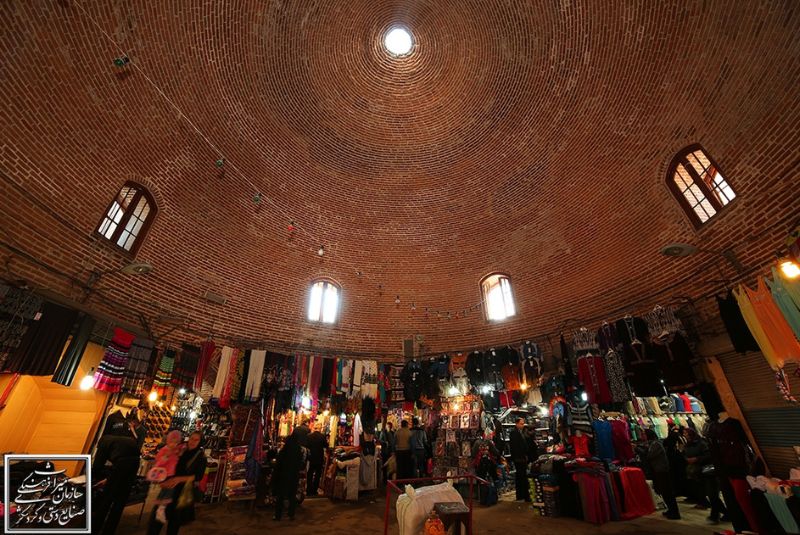
The current structure of the Bazaar of Ardabil showcases architectural elements from the Safavid and Qajar periods, featuring various sections such as aisles (rastehs), arcades (timchehs), caravanserais (sara), mosques, and bathhouses. Within the bazaar, there are also the Jameh Mosque and the Grand Mosque.
Key sections of the bazaar include:
- Grocers' Bazaar
- Butchers' Bazaar
- Woodworkers' Bazaar
- Saddlers' Bazaar
- Qaysariyyeh Bazaar
- Knife Sellers' Bazaar
- Hatmakers' Bazaar
- Main Bazaar Aisle
- Pir Abdulmalik Aisle
- Shoemakers' Aisle
- Gholam's Aisle
- Goldsmiths' Bazaar
- Cotton Sellers' Bazaar
- Coppersmiths' Bazaar
- Blacksmiths' Bazaar
- Haj Mirza’s Dry Goods Arcade
- Golshan Arcade
- Vakil Arcade
- New Arcade or Zanjirlu Arcade
- Haj Ahmad's Arcade
- Haj Shokar's Arcade
- Majidiyeh Arcade
- Imam Jom’e's Arcade
- Doguchi Arcade
- Zanjirli Timcheh
The dried fruits arcade in the bazaar consists of two parallel arcades, each with five entrances and 51 shops. The Golshan Arcade also has two arcades and a caravanserai, located opposite the Zanjirlu Arcade, connecting to the main bazaar aisle and the Pir Abdulmalik Aisle. Another notable section is the Chahar Souq or the Grand Qaysariyyeh Bazaar, a circular area with a tall, simple dome.
The bazaar is characterized by its pointed arches and simple domes. The average width of shop arches is three meters, with arch bases approximately 80 centimeters in diameter.
Natural light illuminates the bazaar through openings in the domes. At the northeastern market, an old inscription, now weathered and unreadable, contains the name of the founder and the date of construction.
Significant portions of the Bazaar of Ardabil have been destroyed due to urban developments over the past fifty years, disrupting connections between some sections and the bazaar center.
Today, the bazaar is divided by Imam Khomeini Street, clearly separating the goldsmiths' market from the current Qaysariyyeh Bazaar. In 1985, the bazaar was restored and registered as a national heritage site under number 1690.
| Also read about: Tehran Grand Bazaar - Iran's Shopping Wonderland
What to Buy at the Ardabil Bazaar

The Ardabil Bazaar offers a diverse array of goods including spices, textiles, and traditional Persian handicrafts like carpets, pottery and copperware. In sections like Qeisariyeh Bazaar, you will find artisans that sell their wares from shops adorned with dome-shaped ceilings and intricate tile work.
You can also purchase traditional Persian spices, dried fruits, and nuts, famous for their exceptional quality. Don't miss the specialized areas such as the Spice Market, Butchers' Market, and the Hat Makers' Alley.
| Read more: Sarein in Ardabil - Iran City of Hot Springs
Ardabil Bazaar Location
The historic Ardabil Bazaar is situated in the center of the city, spanning both sides of Imam Khomeini Street. This central location provides easy access to the bazaar from all four directions: north, west, south, and east.
To the north, it connects to Imam Hussein Square (also known as Taza Square); to the west, it leads to Nasrolli Sufi Street; to the south, it connects to Ayatollah Taleghani Street; and to the east, it links to Ayatollah Kashani Street. Essentially, the bazaar's strategic position ensures that no matter which direction you come from within Ardabil, you can reach it in a short amount of time.
| Suggestion: Fandoqloo Forest in Ardabil
How to Get to the Ardabil Bazaar

If you're starting your journey from Tehran, you'll need to drive 590 kilometers to reach Ardabil. Ardabil is located in the northwest of Iran. It takes approximately six hours and 48 minutes to reach the city of Ardabil.
Upon arriving in Ardabil, continue your route towards the intersection with Ayatollah Taleghani Street. You can find Imam Khomeini Street (RA) at the end of Taleghani Boulevard. This street is one of the most well-known parts of the city, so you can easily locate it with the help of signs or Google Maps. The Grand Bazaar of Ardabil is located on both sides of this street.
| Suggestion: Sheikh Safi al-Din Khanegah and Shrine Ensemble
Tourist Attractions Near the Ardabil Bazaar
Ardabil is a city rich in tourist attractions, and if you are visiting the historic Ardabil Bazaar, you might want to explore other nearby sites. These historical and natural attractions, along with newly established spots, offer various options for visitors. Here’s a look at some of the attractions around the traditional Ardabil Bazaar:
Ardabil Shoemakers' Bazaar

Azam Mosque of Ardabil
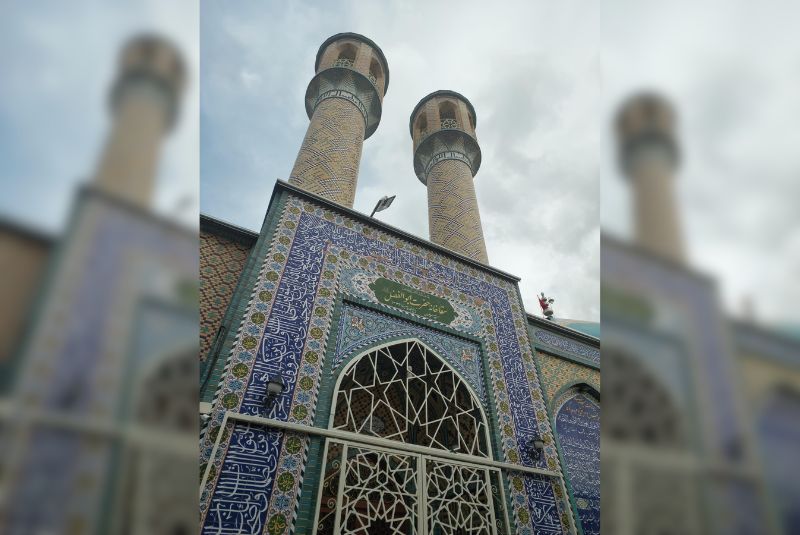
Given the abundance of historical structures in Ardabil, it’s not surprising to find numerous such buildings. Azam Mosque is only 50 meters away from the historic Ardabil Bazaar. This mosque dates back to the Qajar era and was built by Haj Mohammad Hossein Amin.
Later, Mirza Ali Akbar Mojtahed oversaw its repairs, leading some locals to refer to it as Mirza Ali Akbar Mosque. The mosque features multiple halls and courtyards, with turquoise tile work that enhances its beauty.
Jameh Mosque of Ardabil
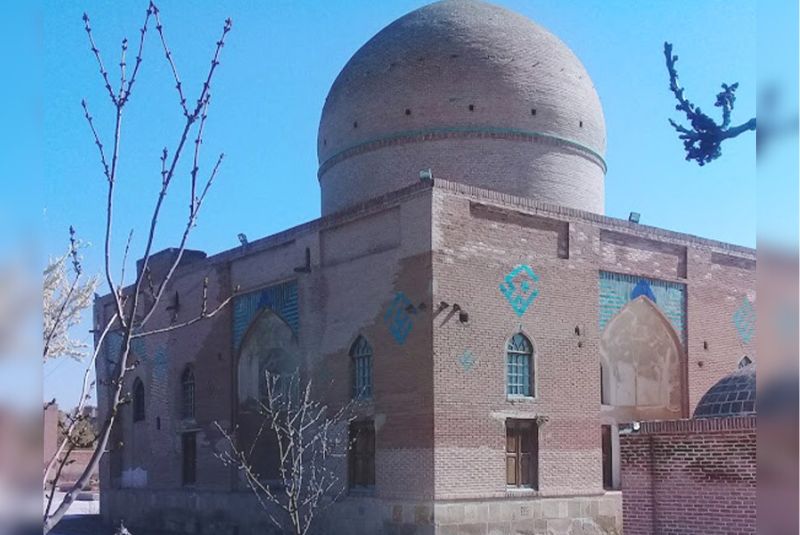
Another close mosque is the Jameh Mosque, located about 500 meters from the traditional bazaar. It features exquisite stucco and decorations, and is a popular place for the local merchants to pray.
Built during the Seljuk period, it is also known as the Atigh Mosque or Friday Mosque. Notably, the mosque hosts various mourning ceremonies during the month of Muharram, including the annual Tasht Gozari ritual.
The mosque was last renovated during the Ilkhanate period. The current structure of the mosque dates back to the Seljuk era, built on the remains of an older structure that was destroyed during the Mongol invasion in 620 AH. It was subsequently rebuilt around 650 AH.
During the Safavid period, it was considered the largest and most important mosque in Ardabil, serving as a central gathering place for the city's residents.
Ardabil Anthropology Museum
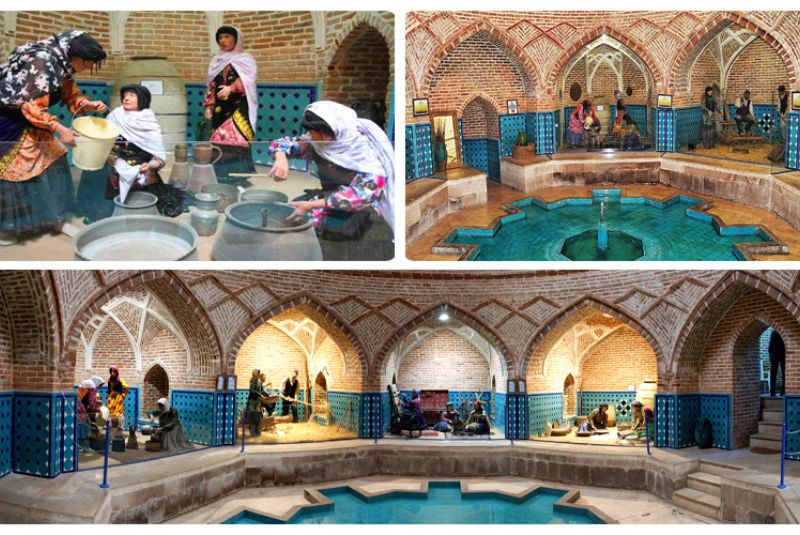
Located near the Grand Bazaar of Ardabil, the Anthropology Museum is housed in the historic Agha Nakhjir Bathhouse. Originally built during the Ilkhanate period under the direction of Zahir al-Din Islam, this bathhouse later became known as Agha Nakhjir.
During the Qajar era, it was purchased and restored by another figure named Agha Nakhjir Motamen al-Ra'aya. Each section of this bathhouse is remarkably picturesque, adorned with splendid tile work.
Today, it serves as a museum, displaying various sculptures that depict the local culture and customs of the region. Visitors can admire the stunning architecture dating back to the Ilkhanate era within this museum.
| Read more: Neor Lake - A Wonder Within Iran's Northwestern Mountains
Best Time to Visit the Ardabil Bazaar
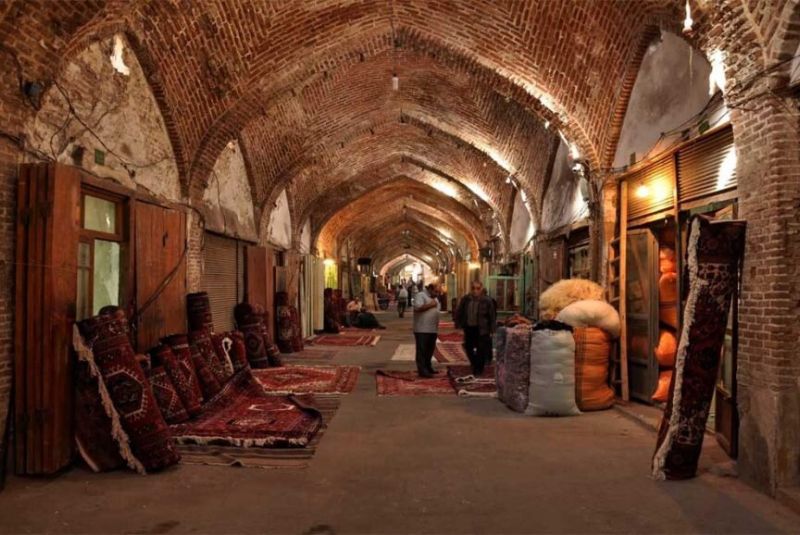
Ardabil province is located in the northwest of Iran, characterized by a cold and mountainous climate. The best time to travel to this province is during spring and summer. Ardabil enjoys cool and pleasant weather during the hot summer days. Surrounding the city, you can witness beautiful nature with stunning landscapes.
For visiting the Grand Bazaar of Ardabil and its fascinating architecture, it's best to go there before sunset. As autumn and winter approach, the weather in Ardabil turns colder, and snow covers everything in white. Consequently, the volume of tourists decreases significantly in the latter half of the year.
If you don't mind the cold weather, you can still travel to Ardabil during this time of the year. However, if you're driving with a personal vehicle, make sure to have snow chains handy.
Where to Eat in/near Ardabil Bazaar

There are many places to eat near Ardabil Bazaar like Sheikh Safiadin Traditional Restaurant, Seyed Agha restaurant and Sah Abbas Restaurant, offering authentic Persian cuisine. Enjoy aromatic kebabs and traditional stews within a short walk from the bazaar.
| Related: Persian Food
Where to Stay Near Ardabil Bazaar
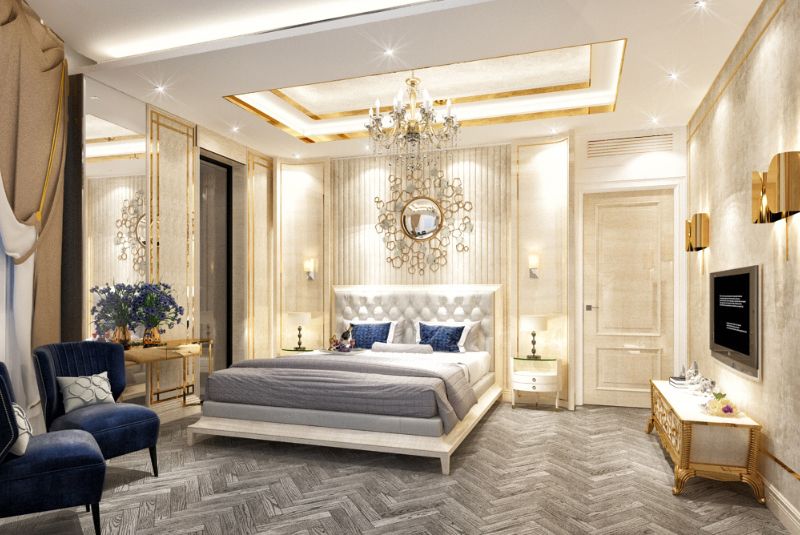
Choose from cozy accommodations near Ardabil Bazaar such as Sabalan Hotel, a budget-friendly option, or Negin hotel for a comfortable stay. For a historic charm, consider Sadeghi historical hotel, blending traditional architecture with modern amenities, all conveniently located within walking distance from the bustling bazaar.
Bottom Line
Explore the vibrant heart of Ardabil at its historic Grand Bazaar, where centuries of culture and commerce converge. This bustling market, steeped in Safavid and Qajar architecture, echoes with tales of Silk Road traders and local artisans. Discover the intricate aisles, domed arcades, and vibrant souks selling Persian spices, textiles, and handicrafts. The bazaar's rich history, from its Seljuk origins to its present-day allure, makes it a captivating destination for travelers seeking a glimpse into Ardabil's past.
Share your story!
Comment below and let us know about your Experience.
Your story inspires others!


Comment
Leave a Comment